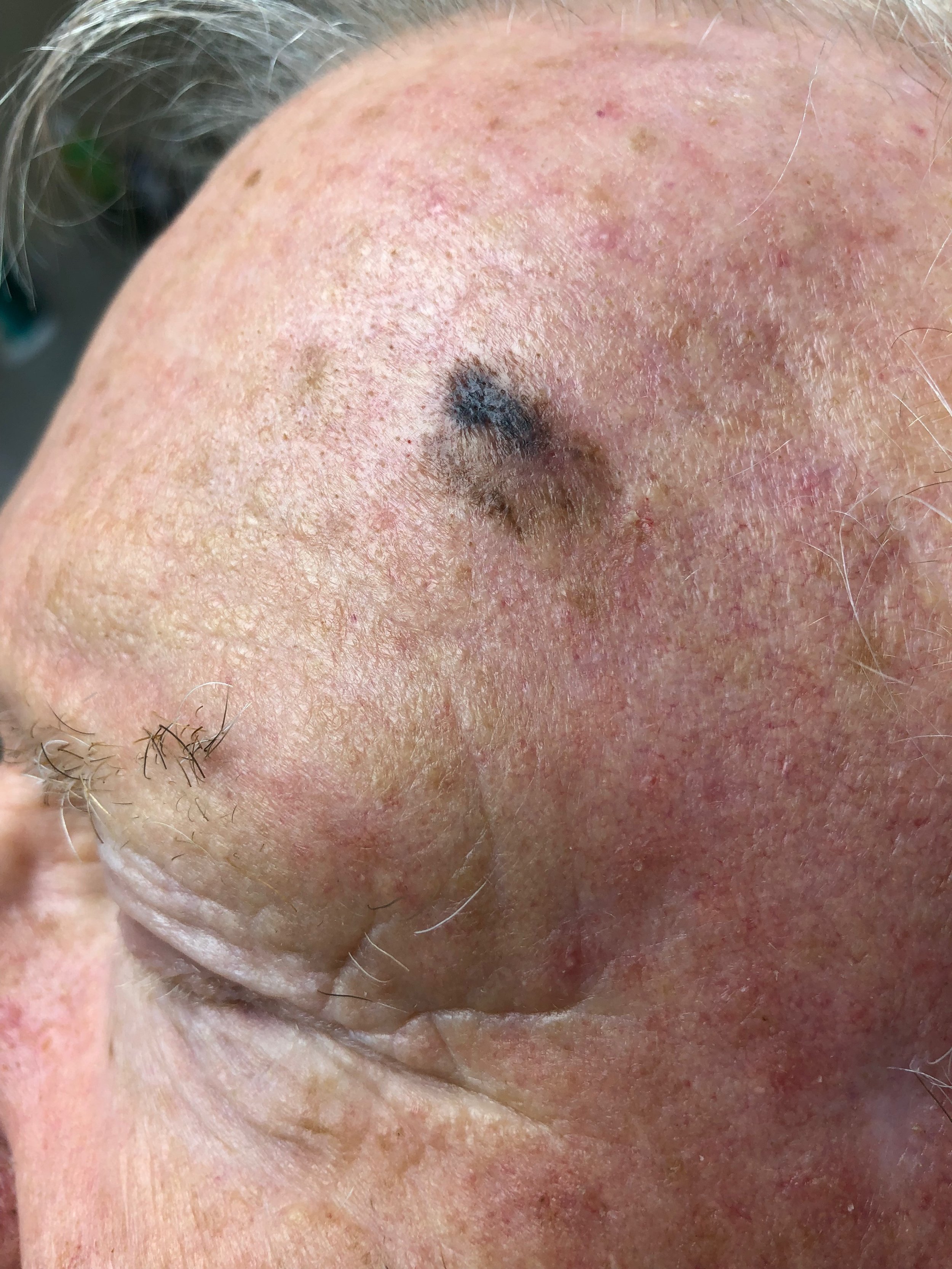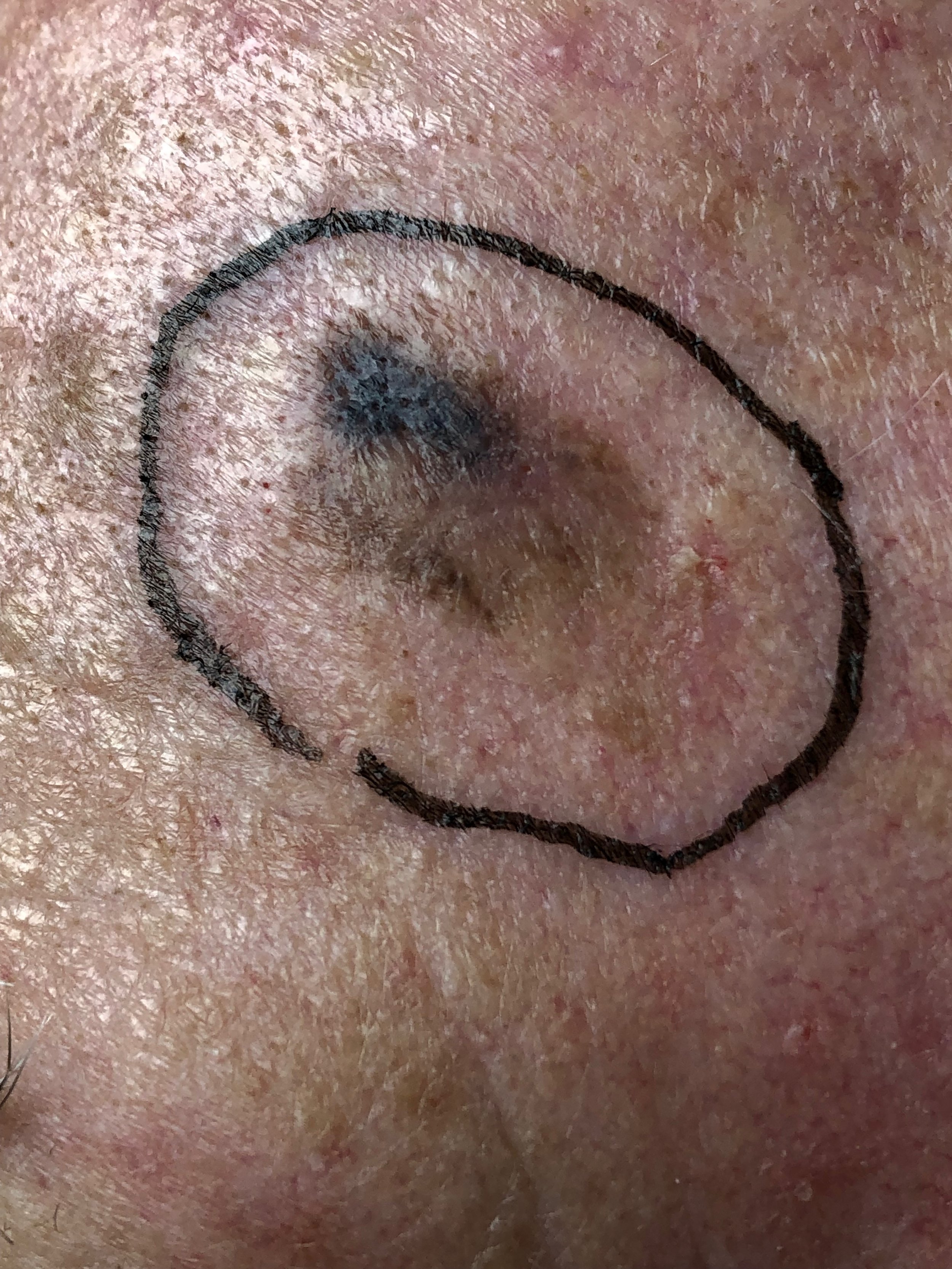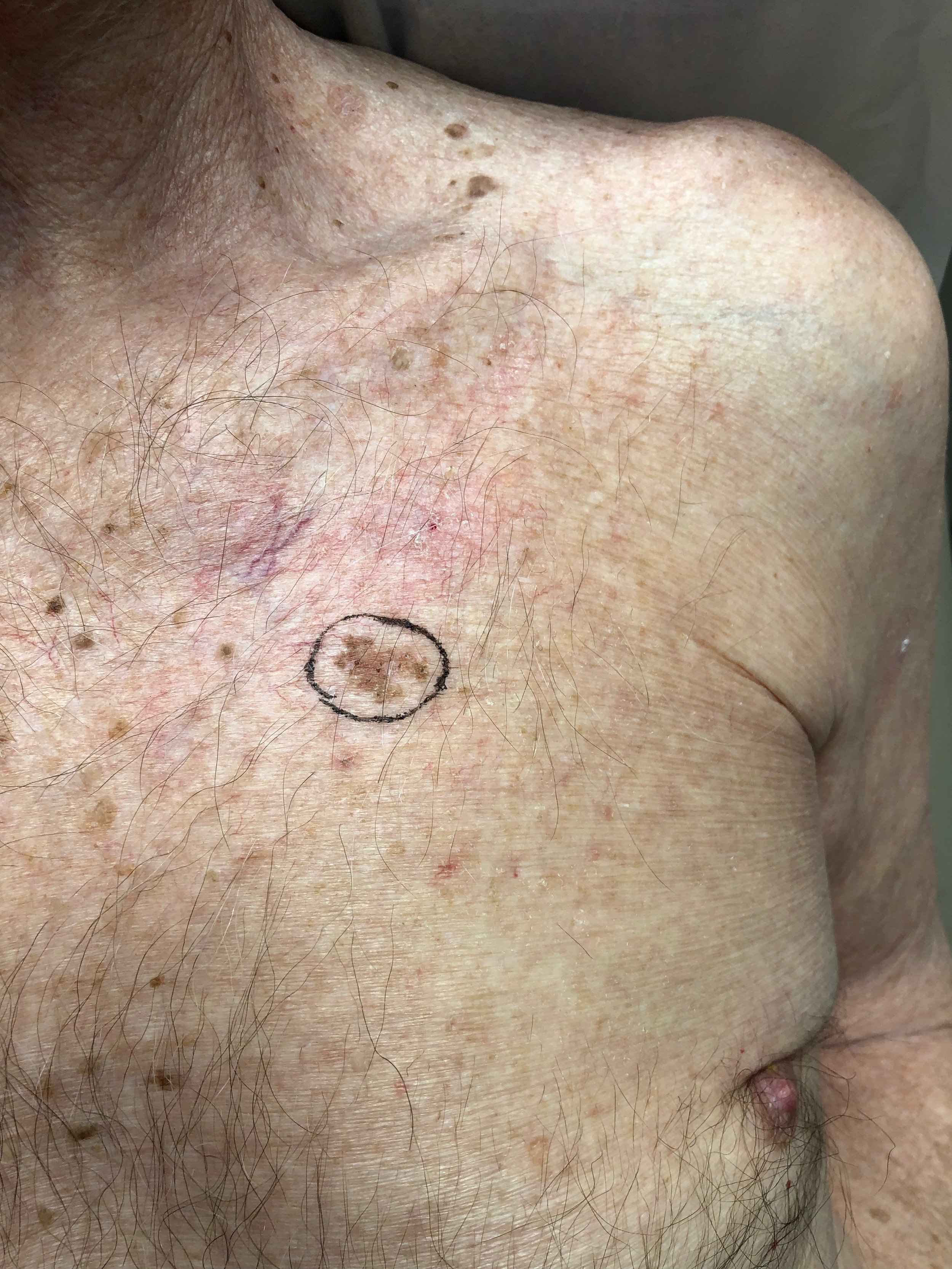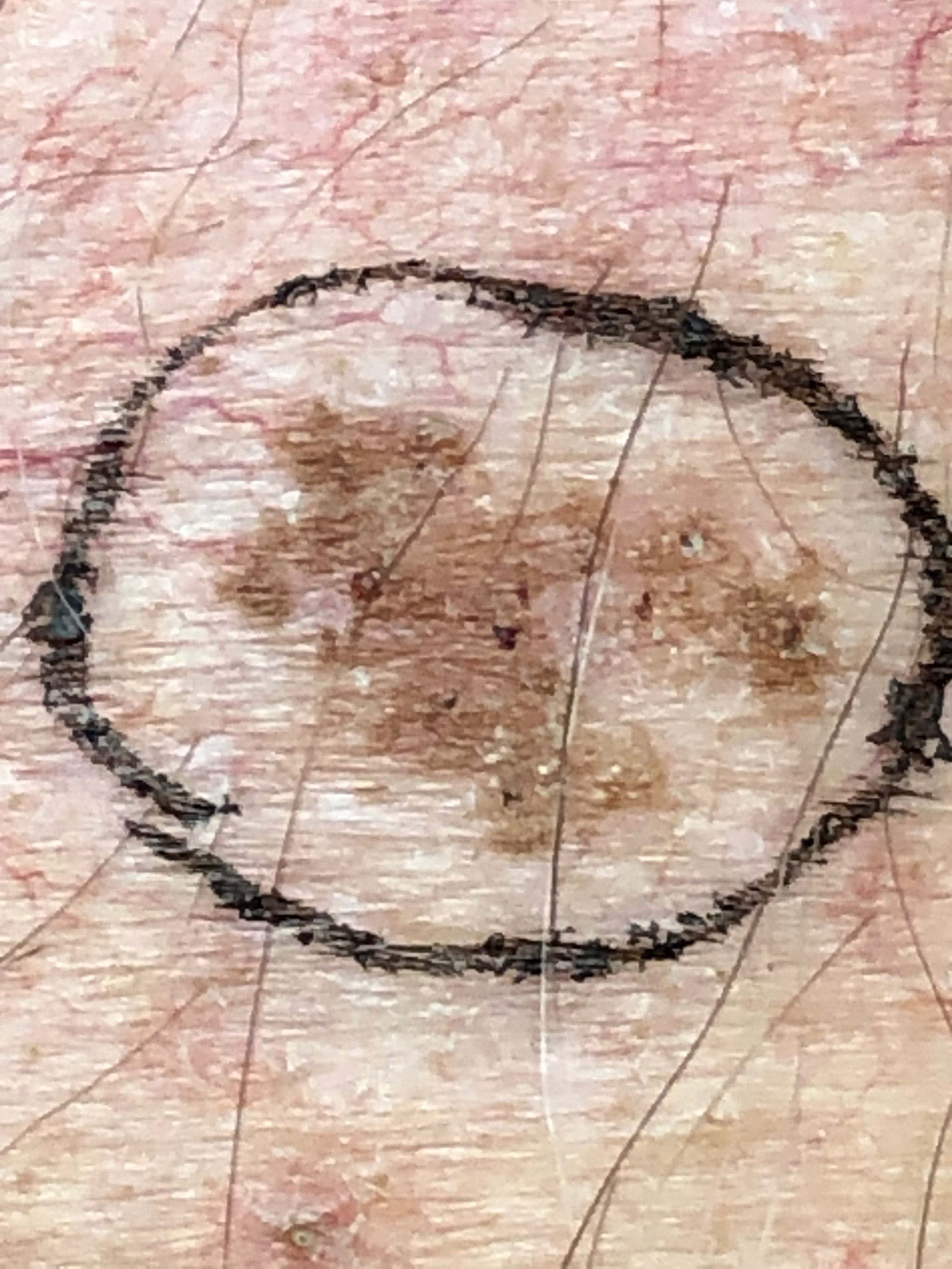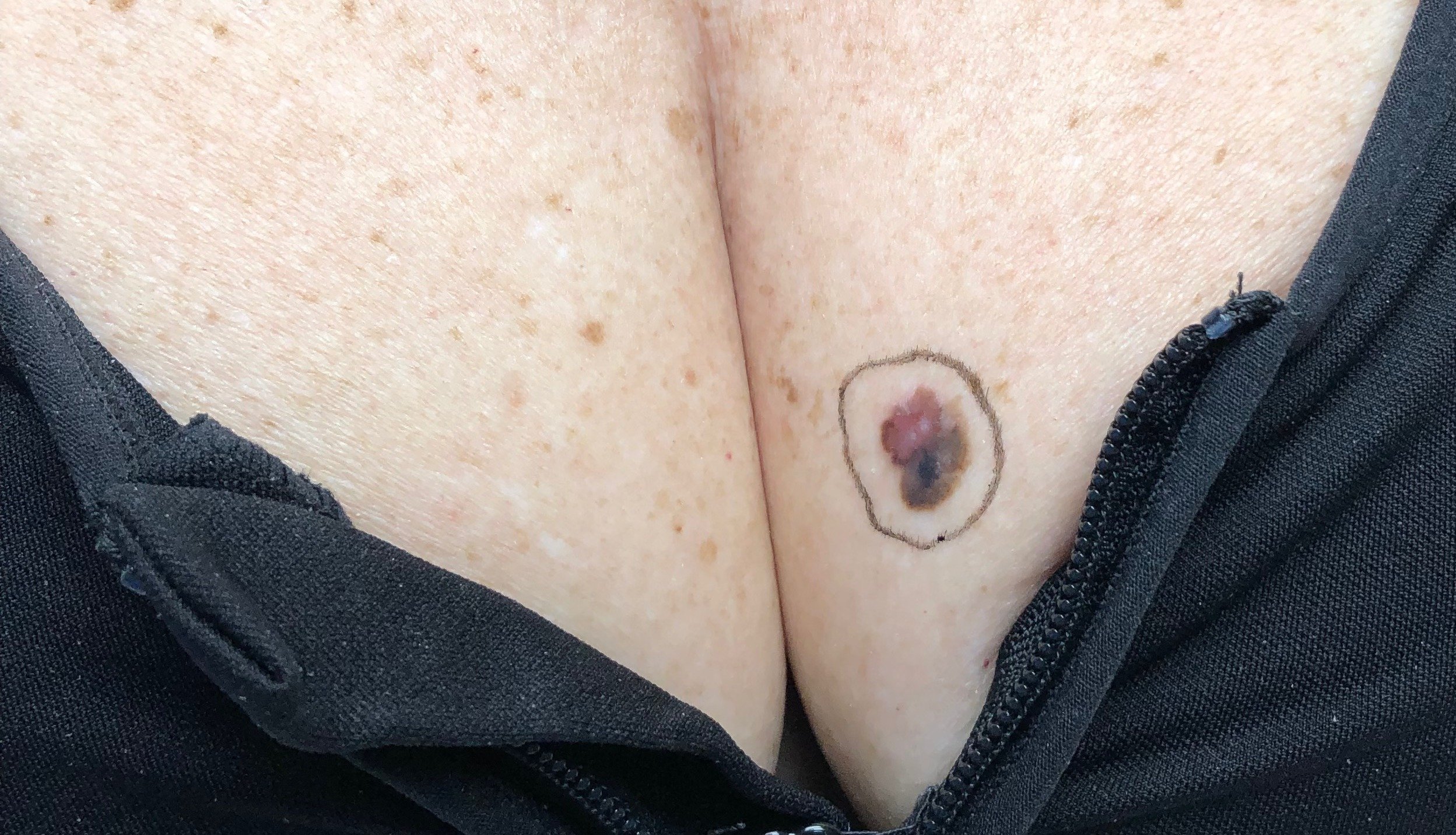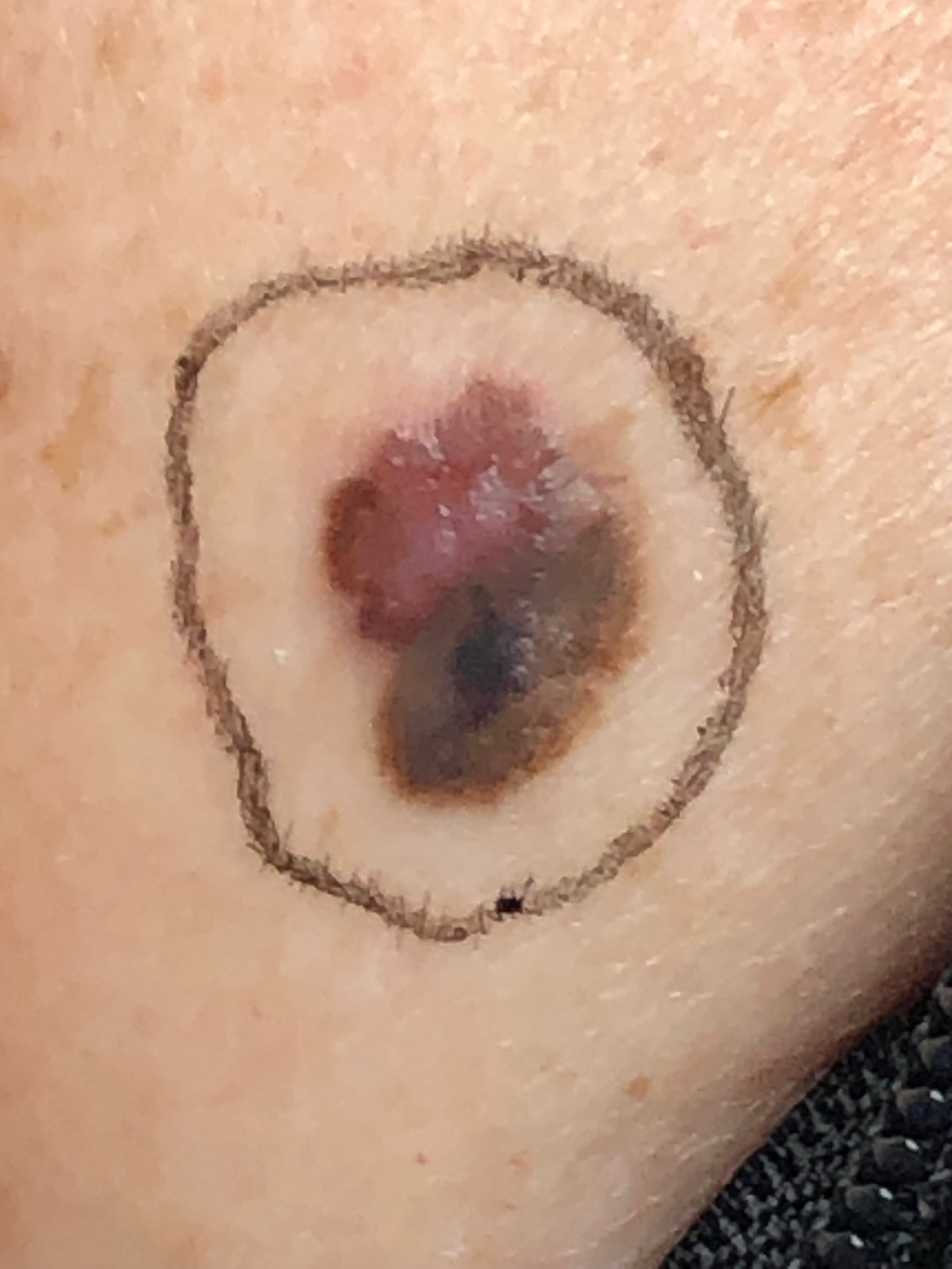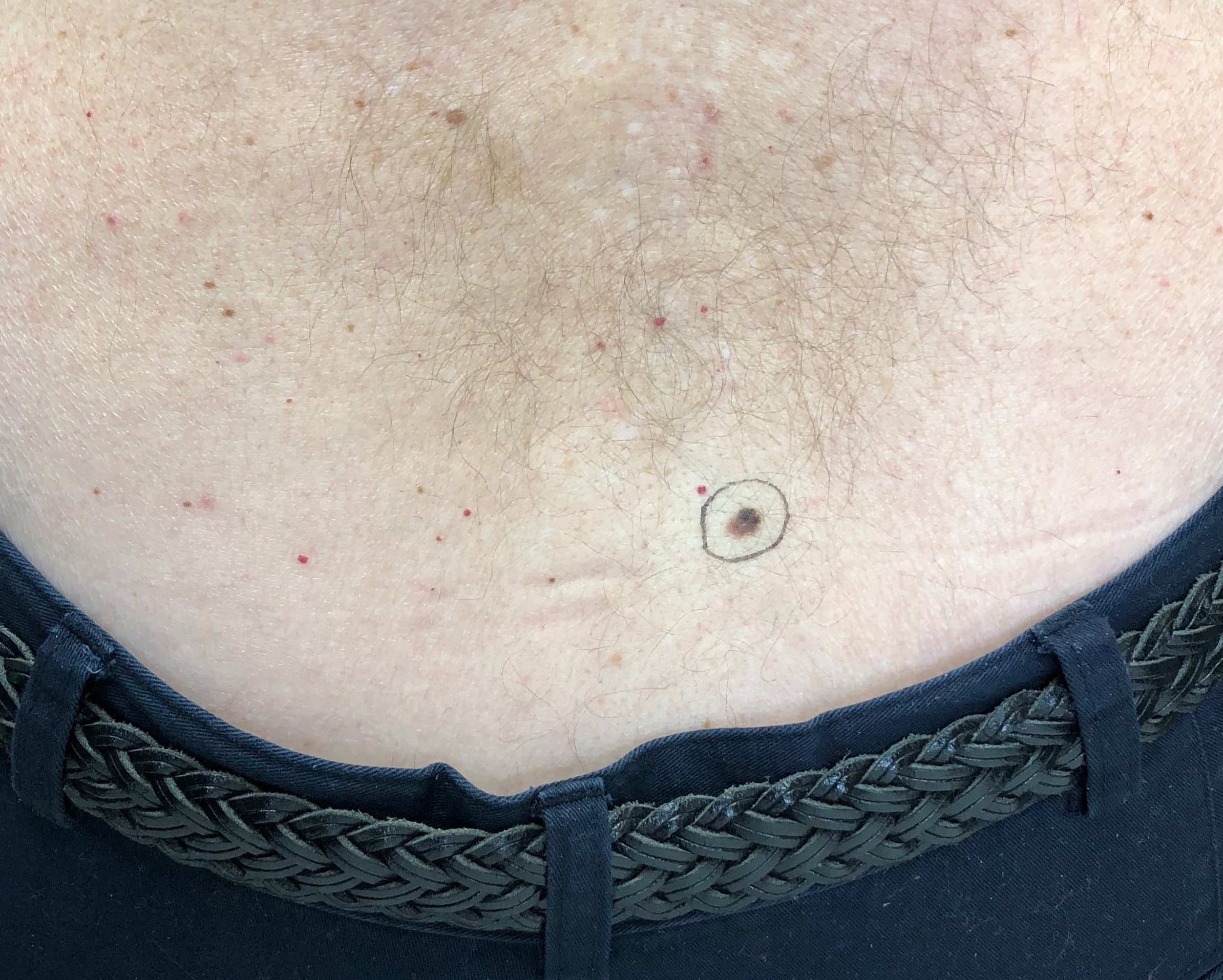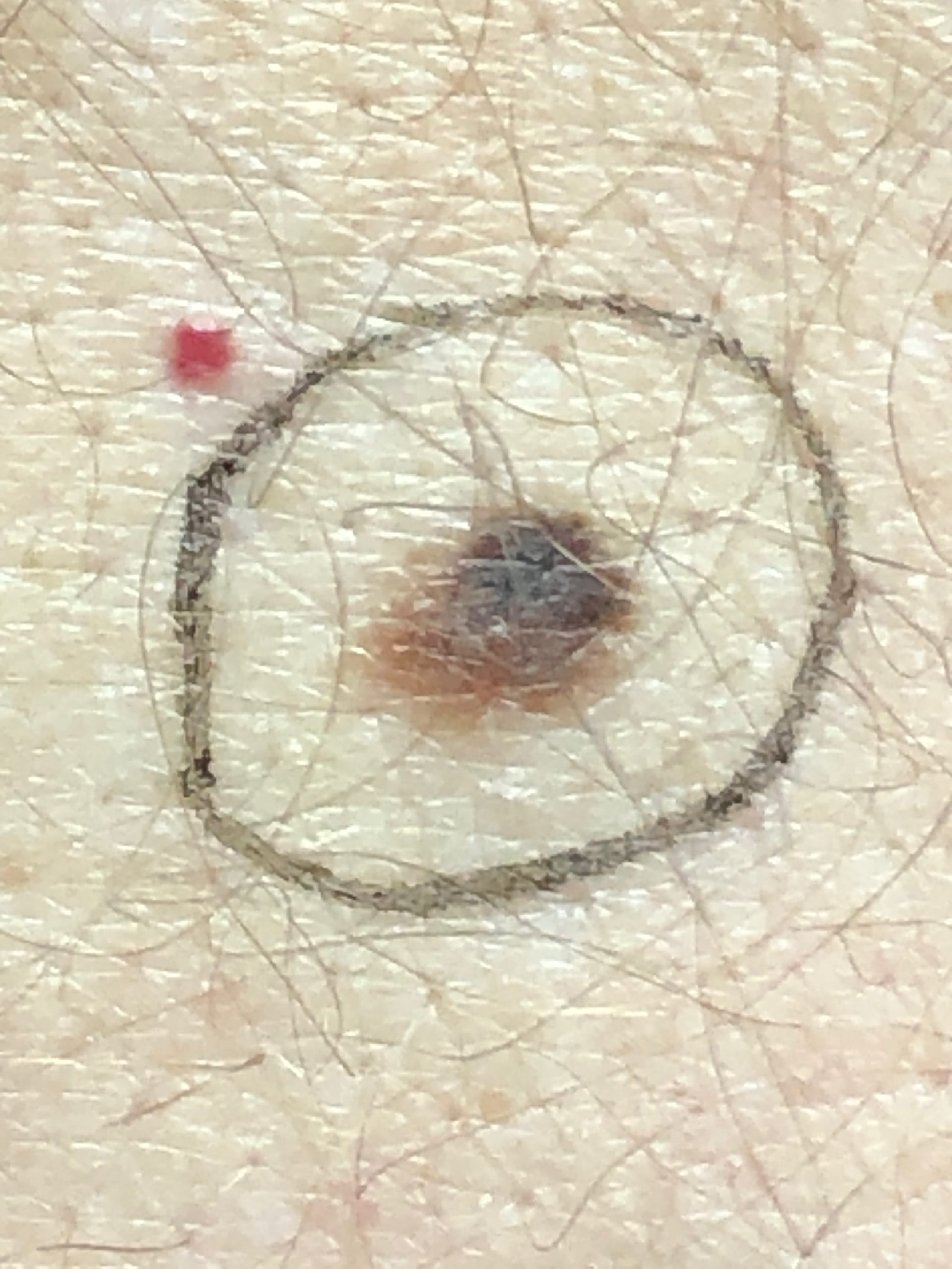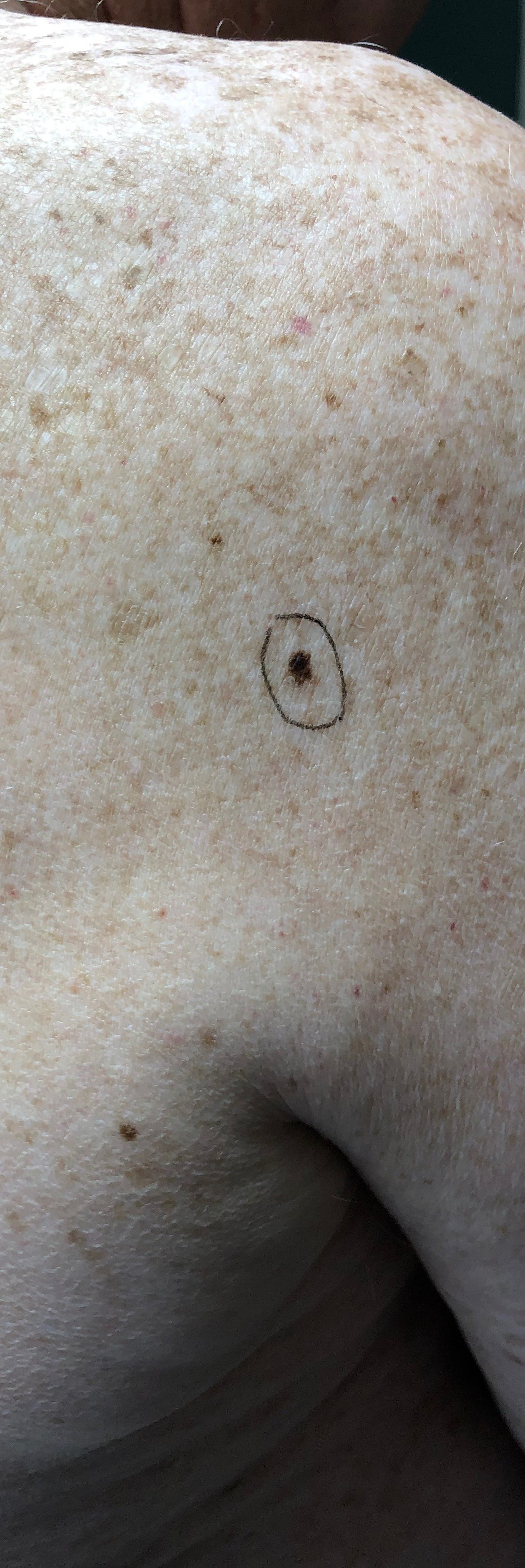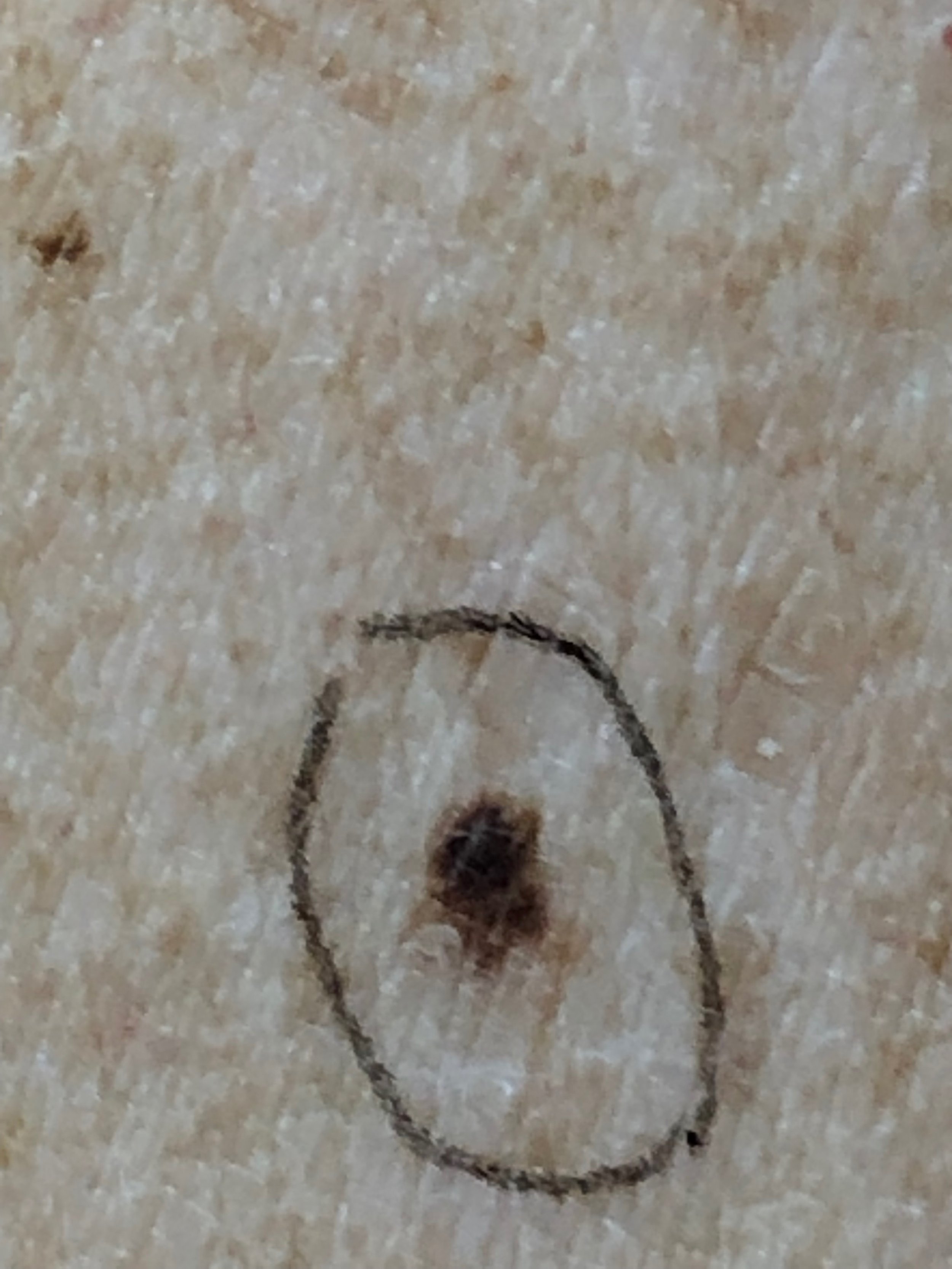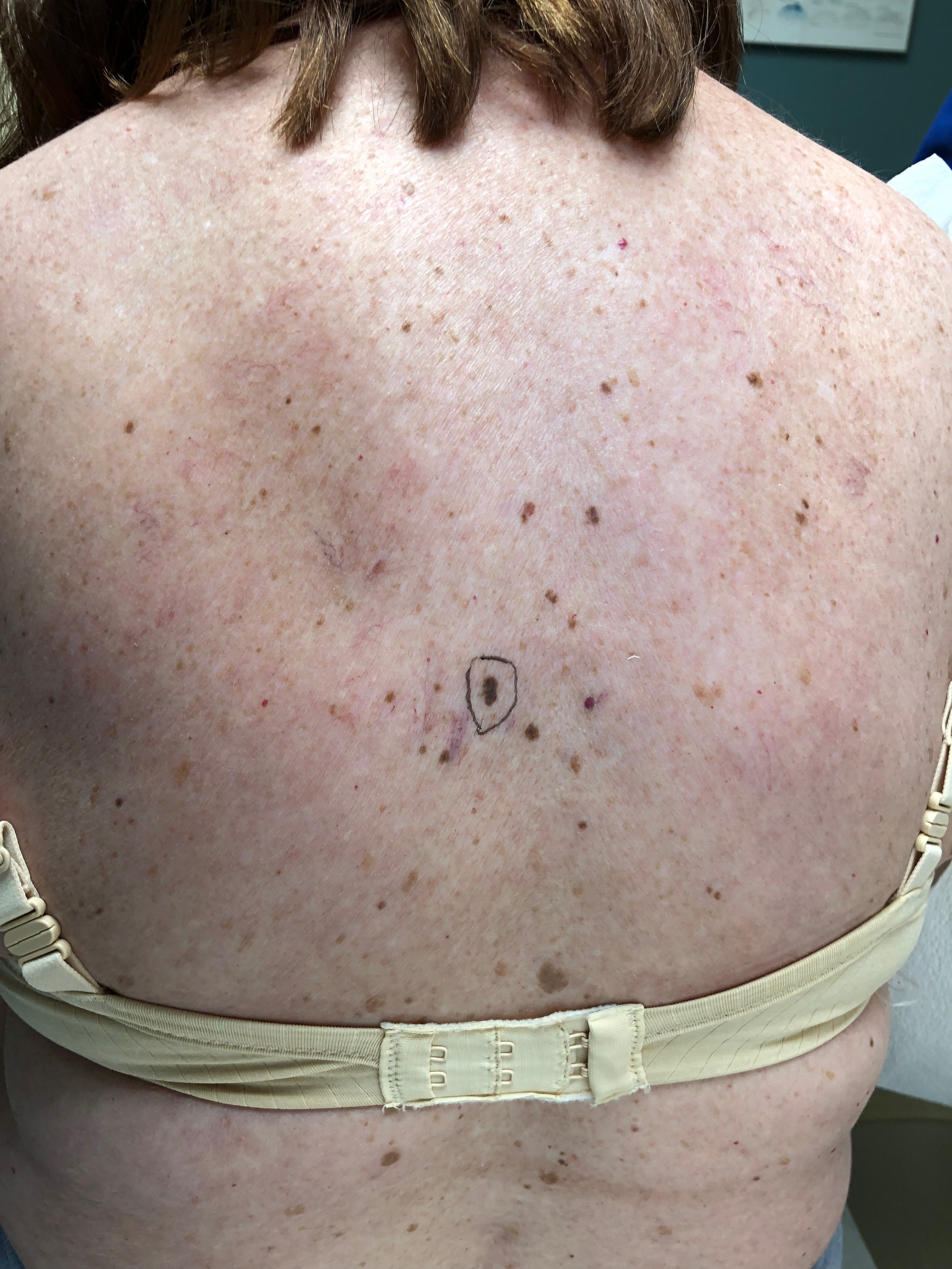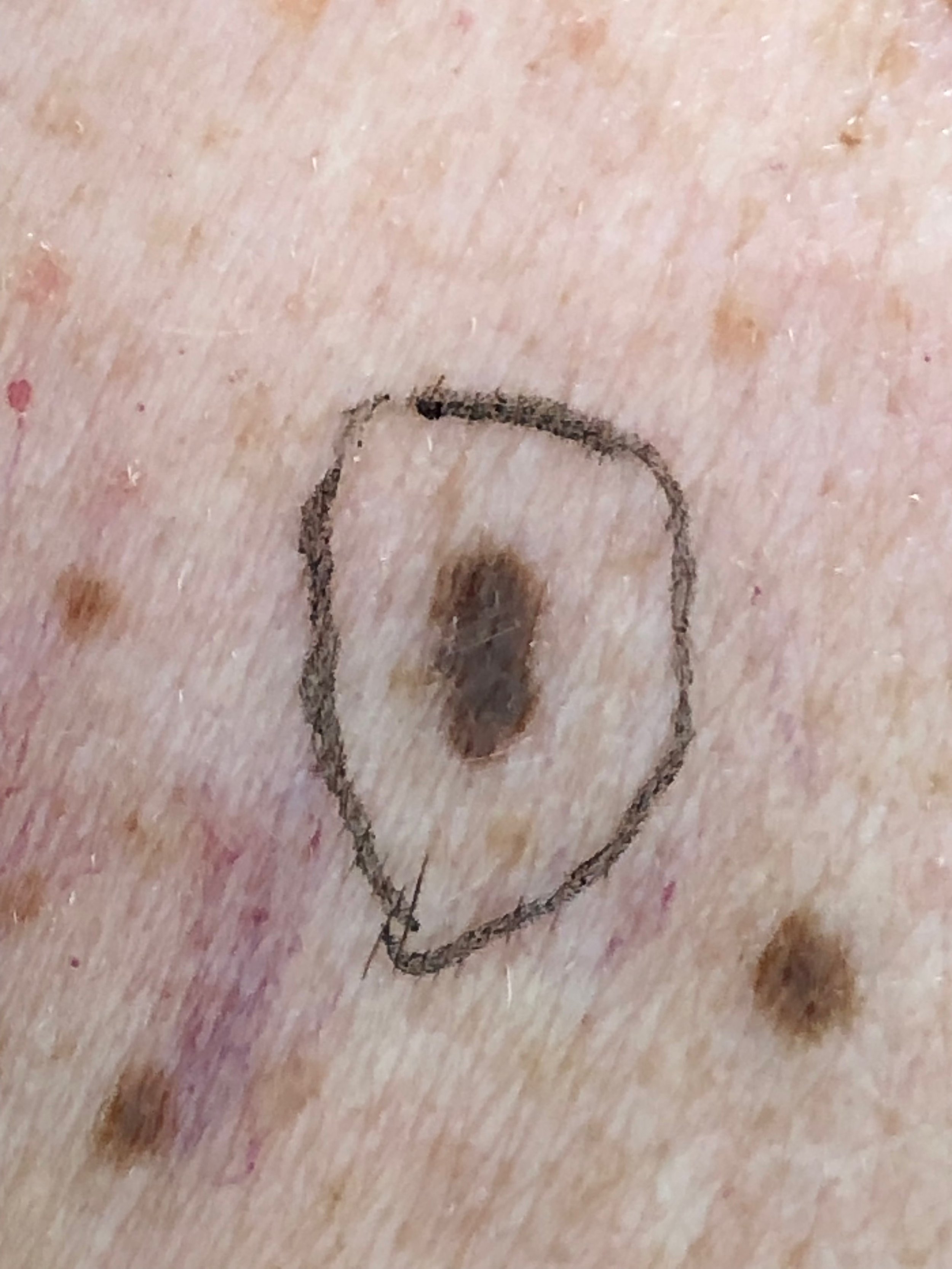How to spot Melanomas and Atypical Moles
Melanoma
Melanoma can present with many different appearances making a simple description very tricky. Characteristic appearances of developed melanomas include the widely publicized ABCDE descriptions.
Asymmetry (one-half different from the other MM Pic 2.1, 2.3);
Borders that are jagged, irregular, and not even/smooth (MM Pic 4.1, 4.2);
Color portions that are variable shades of white, gray, black, brown, red, or pink (MM Pic 1.1, 1.2), Diameter bigger than a pencil eraser (6mm), or thought to be changing or;
Diameter (MIS 1.1, 1.2)
Evolving (MM Pic 3.1, 3.2).
It is important to remember that not all melanomas are black. Some can even appear flesh-colored. And not all melanomas arise from the skin. Some arise can arise from the retina, brain, spinal cord lining, and other internal organs. Skin exams should be thorough to include all areas of the body. Annual retinal exams are also important for early detection.
With melanoma, recognizing the general features of early skin cancer mentioned above is very important due to its varied presentation. Melanoma is a deadly form of skin cancer if left undetected and untreated. So early detection matters in reducing sickness and death associated with melanoma. In addition, sometimes simply noticing a mole or spot that just doesn’t look like the others on your skin (Ugly Duckling) can be the key feature to detecting an early melanoma!
Atypical Moles (MIS 2.1, 2.2)
Atypical moles are those that do not appear like normal moles. They may possess some or all of the ABCDE features described for melanoma, but they do not have all of the diagnostic features on biopsy that characterize melanoma. And unfortunately, we cannot accurately predict if they behave like a “pre-melanoma” that is evolving into a melanoma.
What we do know is that atypical moles tend to run in families, and those families tend to have rates of melanoma higher than the general population. In general, dermatologists recommend that any unusual-appearing mole be evaluated and possibly biopsied/removed to rule out the possibility of it becoming an early melanoma.

